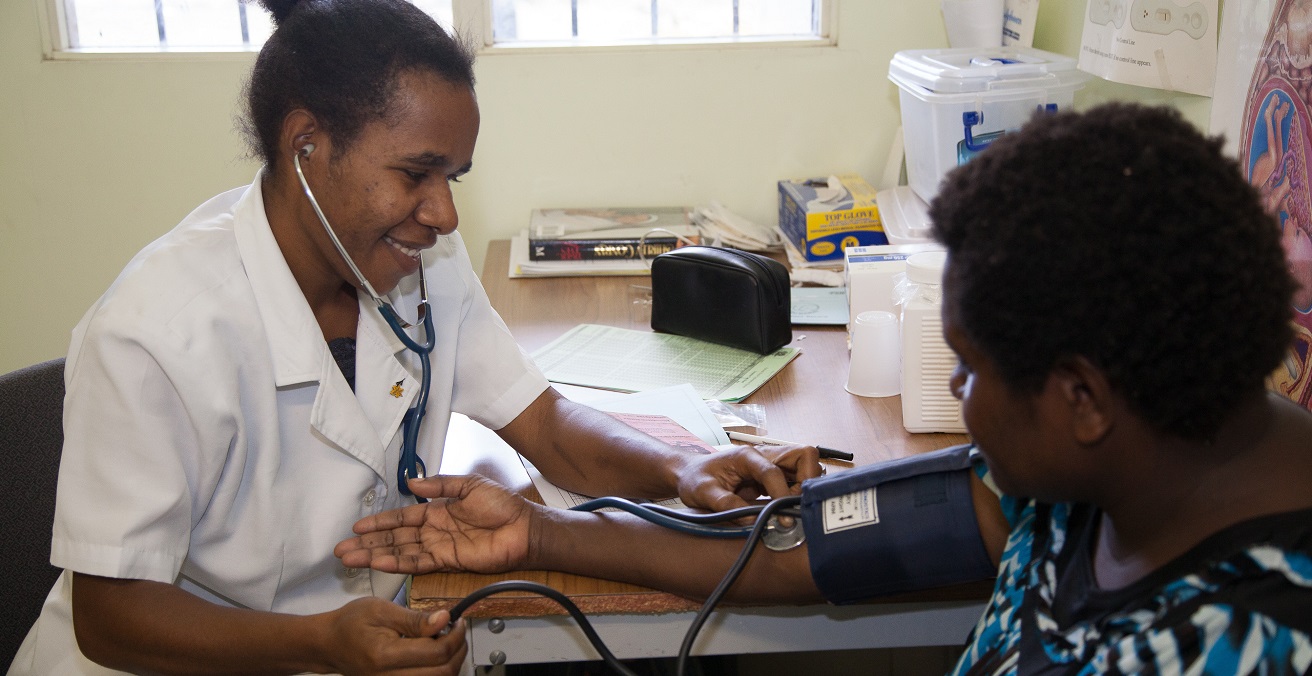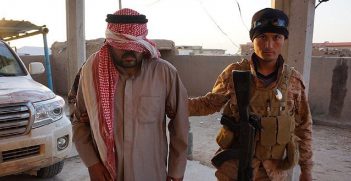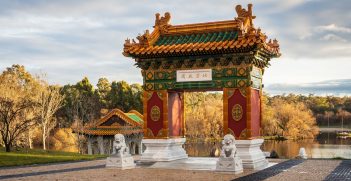COVID-19 in Papua New Guinea: The Final Act

Watching the progress of the COVID-19 pandemic in Papua New Guinea has been like watching a train crash in slow motion. In the absence of urgent action by the PNG or Australian governments, the inevitability of the final crescendo has been predicted since mid-2020.
COVID-19 entered Papua New Guinea (PNG) on 13 March 2020, when an infected fly-in-fly-out mine worker who had been in Barcelona, Istanbul, and Singapore travelled through Port Moresby and Lae to a mine site near Wau. Since then, just as COVID-19 has exposed weaknesses in governance, health services, economies, policing, and personal political behaviour in many countries around the world, so too it has in PNG.
There are many structural political issues impeding a proactive COVID-19 response in PNG. For example, governance is beset by unrelenting competition for funds between individuals who have been elected as members to the national Parliament from 89 district electorates. The funds that flow to district electorates are frequently seen to depend on the generosity of their MP, not upon planning and budgeting.
The consequences of this can be seen in the fact the provision of new infrastructure is given greater importance than the maintenance of existing infrastructure. In the education and health sectors, buildings are dilapidated and textbooks non-existent. Rural health services frequently run out of drugs, children go unvaccinated, and surgeries cannot be performed because equipment is broken.
As money moves from the national government to provinces and districts, it is not uncommon for some of it to go missing. An ex-prime minister said corruption at the highest levels of government in PNG is “systemic and systematic.” This behaviour is encouraged by international and national contractors who bribe members of tender boards.
Another aspect of PNG society exposed by the pandemic is the widespread belief in magic, sorcery, and conspiracy, even among senior providers of health services. This was exemplified in the government and the police’s struggle to prevent the torture and killing of women suspected of being sorcerers and witches in rural areas. Susceptibility to conspiracy has been exacerbated by the widespread availability of mobile phones with internet access, which has resulted in many people posting varying hyperbolised accounts of events.
PNG is physically and demographically challenging. The country comprises four large islands, where more than 54 percent of the total land area comprises hills and mountains. The national capital, Port Moresby, is not connected by road to the rest of the country. A road runs from Lae on the coast into the highlands, where over 3.5 million people live in rural areas. PNG remains one of the most rural countries in the world with over 80 percent of the total population residing in a rural location.
Constraints to the provision of services are obvious, but often seem to be overlooked when programs like the vaccination of children or literacy are proposed by international organisations. From 1914 to 1975, Australia’s colonial district administration overcame some of the physical constraints with the establishment of what were known as “patrol posts” in remote rural areas, manned by officers who were required to regularly walk to visit the villages within their jurisdiction. They carried out village censuses, supervised education and health services, and provided regular reports on their areas. Shortly after PNG gained independence in 1975, this system disappeared, partly because it was seen to be undemocratic. It was replaced with a local-level government system in which councilors were elected. Today the local government system is struggling from an almost complete lack of funds.
As a result, there is a near complete lack of information about what is happening in the countryside. Attempts to find out are fraught. The 2011 national census was pronounced a failure by the then prime minister, most births and deaths are currently not registered, and infant, child, and maternal mortality rates are estimated from sample surveys in a few places. As well, the population growth rate is thought to be around 2.7 percent per year, a rate which will double the population in 30 years, and the total population is estimated be approaching nine million. The high growth rate means 75 percent of the total population are less than 35 years old, and 40 percent are under 15 years old.
After the introduction of COVID-19 in March 2020, the number of cases did not increase rapidly. By mid-April, only two cases had been detected in PNG, but a senior doctor put this down to a lack of testing. He also exposed a lack of funding that denied health staff adequate personal protective equipment (PPE). By the end of July, 15 laboratory staff at the National Centre for COVID-19 Control (NCCC) and their families who had not been provided with PPE tested positive. The government tried numerous times to impose restrictions to personal movements, but worried about how to do it without creating problems for businesses and for individuals trying to buy food from markets. Photographs posted on social media suggested most people in Port Moresby either did not know about the restrictions or ignored them. Additionally, PNG ran out of test kits in May.
Seemingly random cases appearing across the country suggested many unidentified cases in the general population were travelling and taking the virus with them. It was suggested by a senior doctor that the youthfulness of PNG’s population meant mild symptoms would go undetected, as many citizens do not seek medical help for mild fevers. On social media, some began to argue that Papua New Guineans were immune from COVID-19, or that or that the virus was a Western-inspired plot to kill black people.
In late July 2020, Japan, Australia, The World Bank, and Newcrest Mining provided 631,000 test kits to PNG. Subsequently, Australia reallocated but did not increase its aid budget to provide more funds to assist PNG. Instead, Australia drew criticism after announcing it intended to spend A$175 million on a naval base on Manus Island.
In August, 37 workers at the Ok Tedi mine tested positive and the mine closed, causing serious problems for the PNG economy. The virus was now in ten provinces, but the leader of the opposition said the case in his province was “a fake,” and that Australians working in the NCCC should be “investigated” as, by recommending lockdowns, they deliberately damaged the PNG economy.
By November, 583 cases had been identified. The PNG prime minister announced he was giving K10.2 million to a company known as Niugini Biomedical Ltd, formed by academic staff at the University of Papua New Guinea’s medical faculty. This faculty claimed they had done a literature review of COVID-19 and would run “clinical treatment trials” of existing drugs known to cure infections.
At the time of writing, PNG has approximately 1,500 cases, with a rate of increase around 90 cases per day. In Australia, the sexual assault allegations associated with the parliament have diverted attention away from PNG’s situation.
Considering the lack of testing and the unknown numbers of infected people in the population, nor any knowledge of where they are, it is not clear what can be done to prevent the spread of the virus into the rural population. Australia voters will expect the government to help PNG meet the impacts of the pandemic. The Australian government is probably going to regret that it did not respond earlier and with greater vigour to need to assist PNG to meet the challenges of the arrival of the COVID-19 virus a year ago.
Bryant Allen is an Honorary Associate Professor in the Department of Pacific Affairs, College of Asia and the Pacific, The Australian National University. He has lived and worked in rural areas of PNG since the 1970s and has taught at the university in Port Moresby. He has written about previous epidemics of smallpox and dysentery in PNG. In March 2020 he wrote that the pattern of spread of the COVID-19 virus would probably follow the movements of people by road and air in PNG and be most severe in the large cities of Port Moresby and Lae under the living conditions that prevail there.
This article is published under a Creative Commons License and may be republished with attribution





